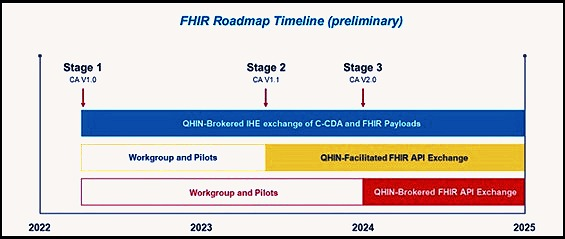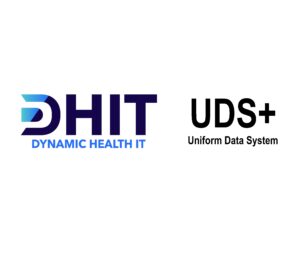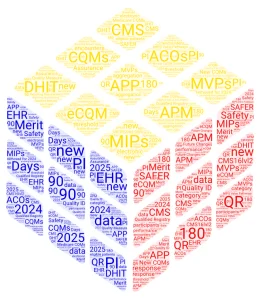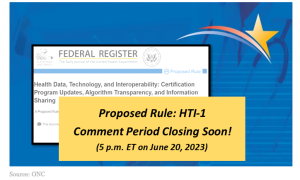Our government is still chasing the elusive goal of a National Health Information Highway (often referred to as NHIN) for healthcare data sharing. The first major initiative in this area was Meaningful Use, fueled by $19.2 billion from the 2009 American Recovery and Reinvestment Act. The money was allocated to increase the adoption and use of Electronic Health Records (EHR) by physicians and hospitals. Under the Act, the Office of the National Coordinator for Health Information Technology (ONC) was created within the Department of Health and Human Services.
The 2014 Edition EHR certification criteria introduced by ONC included a requirement for EHR vendors to support the Direct Protocol for secure transmission of healthcare data. The Direct Project spawned a new acronym: HISP, which stands for health information service provider. HISPs are certified through the Electronic Healthcare Network Accreditation Commission (EHNAC) and by definition, providers using a certified HISP can exchange clinical data with providers using any other certified HISP through the use of “Trust Anchors” without the need for additional programming or legal agreements.
The Direct Protocol has met with a good deal of success but Health Information Exchanges (HIEs) have not embraced Direct, instead relying mostly on Integrating the Healthcare Enterprise® (IHE) ITI profiles. Unfortunately, there is no regulatory requirement for HIEs to use Direct and Direct messaging often has a per-transaction cost that the typical HIE may not be able to afford. Direct is also limited due to its underlying SMTP technology – the same technology used by your email provider. Direct goes beyond regular email by being secure and using encryption – a Direct message can handle various clinical document “payloads”, including commonly-used C-CDAs (Consolidated Clinical Document Architecture XML documents). Even with the widespread adoption of Direct, the US has still not achieved the goals set forth under Meaningful Use or the NHIN.
TEFCA Rollout Starts Now
TEFCA (Trusted Exchange Framework and Common Agreement) is ONC’s latest initiative to construct the elusive Information Highway. Of course COVID, and the accompanying challenges of monitoring infection rates and vaccination status, has added a sense of urgency to this initiative. Analogous to Direct Protocol’s HISP, TEFCA introduces the concept of a Qualified Health Information Network (QHIN). The goal is the same as for Direct: Allow seamless nationwide data sharing without the need for separate agreements or custom programming between individual “silos” of healthcare data. In this case, the primary silos that are being targeted are Health Information Exchanges (HIEs) rather than individual providers or hospitals.
TEFCA & The Sequoia Project
So why haven’t we heard more about TEFCA? Until January 18, 2022 when ONC published the Trusted Exchange Framework, Common Agreement – Version 1, and QHIN Technical Framework – Version 1, it was still in the formative stage.
“The overall goal of the Trusted Exchange Framework and Common Agreement (TEFCA) is to establish a universal floor of interoperability across the country. The Common Agreement will establish the infrastructure model and governing approach for users in different networks to securely share basic clinical information with each other—all under commonly agreed-to expectations and rules, and regardless of which network they happen to be in. The Trusted Exchange Framework describes a common set of non-binding, foundational principles for trust policies and practices that can help facilitate exchange among HINs.”
In 2019, The Sequoia Project, was awarded the cooperative agreement from the ONC to serve as the Recognized Coordinating Entity (RCE). Not only will the RCE designate and monitor QHINS but it will also develop, monitor implementation of, and maintain the Common Agreement component of TEFCA.
QHINs (Qualified Health Information Networks)
If, like the DHIT team, you were listening to the ONC Virtual Meeting on Feb 2nd & 3rd, you would have heard the buzz. TEFCA’s framework calls for QHINs to communicate with other QHINs and provides technical specifications for interoperability. Who are the selected QHINs? None at this moment. The application period will begin Q2, 2022. Organizations such as ,United States QHIN (USQHIN) and ,Health Gorilla have been preparing with the goal of becoming one of the first QHINs.
QHIN technical requirements were detailed during the Trusted Exchange Framework and Common Agreement – QHIN Technical Framework (QTF) Overview Session at the ONC Virtual Meeting. The QHIN Technical Framework (QTF) supports QHIN-to-QHIN data exchange, which is TEFCA’s primary focus. At its core, the QTF supports:
- QHIN Query to request data (Pull); and
- QHIN Message Delivery to send information to a recipient (such as a primary care provider or public health agency – Push).
The short-term standard data “package” will be the version 2.1 C-CDA 2.1, an XML document standard that certified EHR software must already support. Required data elements are based on the United States Core Data for Interoperability Version 1 (USCDI v1). Transport and handshaking between QHINs will be defined by “Integrating the Health Care Enterprise” (IHE) profiles.
TEFCA Future
The future direction for TEFCA revolves around the FHIR standard. QHINs will be allowed to use a FHIR API or Proprietary API with a push from Conditions of Certification standardizing FHIR API for QHINS by 2024. ONC and the RCE have published the ,“FHIR® Roadmap for TEFCA Exchange – Version 1.”

The roadmap envisions three stages of FHIR exchanges with FHIR available in Stage 1 but not mandated :
- Stage 1: FHIR Content Support (FHIR content possible but coordination with trading partners needed)
- QHIN-brokered IHE exchange of FHIR payloads between QHINs available
- Stage 2: Network-Facilitated FHIR Exchange (aligned with CY2022 ONC certification to add to FHIR APIs)
- Optional QHIN-facilitated FHIR API exchange between Participants and Sub-participants available
- Stage 3: Network-Brokered FHIR Exchange
- QHIN-brokered FHIR API exchange between QHINs available
- QHIN-facilitated FHIR exchange required
DHIT’s Role
DHIT has been involved in FHIR since its inception. ONC adopted FHIR as the standard for Application Programming Interfaces (APIs) as stated in the 21st Century Final Rule. As mandated by the final rule, EHR developers must have a certified FHIR API in production by December 31, 2022. Aligned with TEFCA, DHIT can provide certified technology and expertise for:
- Health Information Networks (HINs)
- State Governments and Public Health
- Patient and Consumers
- Payers
- Healthcare Providers and EHR vendors

DHIT’s ConnectEHR and Dynamic FHIR API solutions are ready for TEFCA. All our products support USCDI v1. QHINs can leverage ConnectEHR to create and parse certified 2.1 C-CDA documents using the defined templates from the CDA R2 Implementation Guide. Our Dynamic FHIR API uses “FHIR on the Fly” to convert a 2.1 C-CDA to FHIR resources. A FHIR Data Store is also available.




